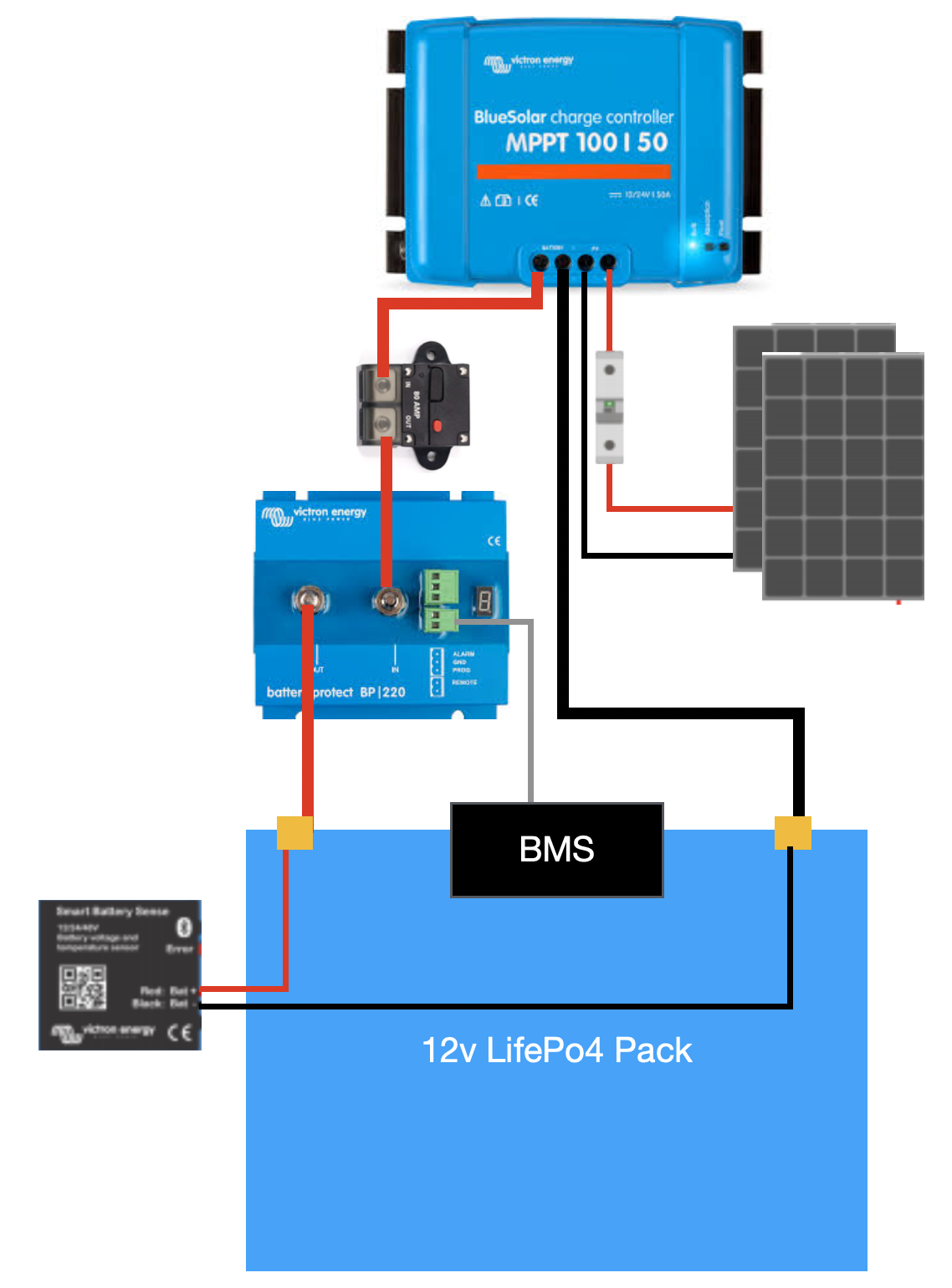Hello. I'm looking at the correct way to use Victron's BatteryProtect (BP) and have a number of questions about using it in the solar charging circuit.
The following is the suggested wiring from Victron's website:

A simplified version of the charging circuit for my application is as follows:

The existing BMS would trigger the BP to switch off in the event of overcharging or balance problem etc.
I understand the BP should "never have reverse current from a battery source" (from the product page). My questions are as follows:
1. Wouldn't it make sense to cut power on the PV side of the controller so it is not running without a battery connected? I understand the BP is only rated to 36v and any PV system over this would require some other form of switching.
2. If the MPPT was set to Absorption at 13.9v and Float at 13.6v, then as the MPPT switches to Float the battery voltage is higher. Does this cause a revers current problem?
3. At night (or when the solar is insufficient) the voltage is higher on the OUT terminal than the IN. Effectively the controller is powered by the battery (while a very small current). Isn't this a problem?
4. In the previous point, if the BP activates (disconnects) when the battery voltage is higher than the MPPT then isn't this a problem?
4. If the battery is disconnected (either via the BP or Breaker) then the SmartBatterry Sense is still connected to the battery while the MPPT is not. Would this put the MPPT into a state where its trying to raise the voltage and go into significant over voltage? Then what would happen if the battery reconnects?
5. Given the way the MPPT uses the SmartBattery sense (ie slowly adjusts to compensate for voltage differences) wouldn't this result in the MPPT recording (to store in history) incorrect minimum battery voltages at night through the BP?
I've considered using a 200A contactor but it takes too much hold current. Then I started to think about using a Solid Sate Relay with MOSFET but thought all of the above would be an issue. This lead me to the Victron BP but I'm guessing (maybe incorrectly). the BP has the same problems?
I've read the other threads here on BP but considered this to be a slightly different set of question (and of course not an answer) to warrant its own thread. Sorry if its felt to be duplication.
Thanks in advance and sorry if my understanding of the BP is incorrect.
